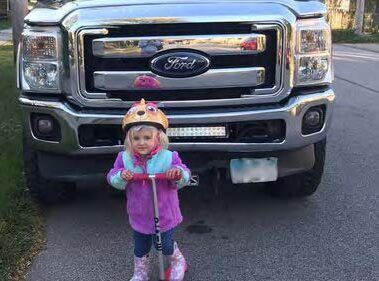It’s a crisis years in the making: vehicles are getting bigger, leading to a disturbing spike in deaths of people outside cars.

Image: Angie Schmitt
Fatalities and serious injuries among pedestrians and cyclists have skyrocketed by more than 50% in the past decade. But under the federal government’s safety rating system, known as the New Car Assessment Program (NCAP), almost every vehicle gets four- or five-star ratings. That’s because the system only takes into account the safety of those within cars, not outside them.
After NACTO and thousands of concerned residents, safety experts, cities, and organizations called on USDOT in 2022 to reform the program so customers have accurate information on the safety of vehicles that they purchase, the agency proposed the inclusion of an optional pedestrian crashworthiness test within NCAP. While this proposal is a step in the right direction, it still lets automakers off the hook for designing dangerous vehicles.
The proposed pedestrian test isn’t included in the vehicle’s final safety rating, which means vehicles that perform poorly can still receive 5-star overall safety ratings. The test would also be conducted by car manufacturers themselves, and since it’s voluntary, automakers can skip it entirely. And even when automakers do conduct the test, the critical results of it will only be published as a footnote on an obscure website, leaving consumers largely uninformed.
NCAP can be improved in other ways, too: USDOT still needs to incorporate life-saving vehicular features into its ratings, including Advanced Driver Assistance Systems and Direct Vision standards that can prevent bicyclist and pedestrian-involved crashes altogether.
Read NACTO’s full list of recommendations.
Cities, advocates, and safety experts from across the country have joined our call to update the outdated ratings system that gives misleadingly high safety ratings to the most dangerous vehicles on American roadways. Read what they had to say.
Many cities and transit agencies have also pushed for changes. You can view some of their statements here:
To learn more about the importance of vehicle design in keeping pedestrians safe, check out this webinar, which was organized by America Walks and features a presentation from NACTO: